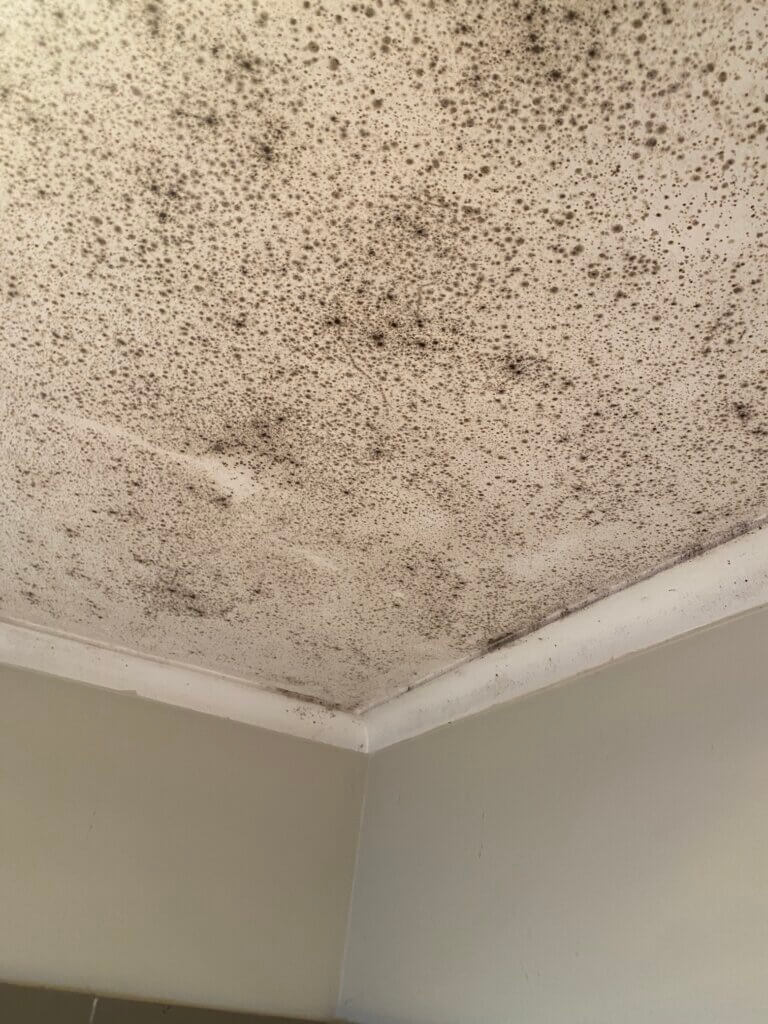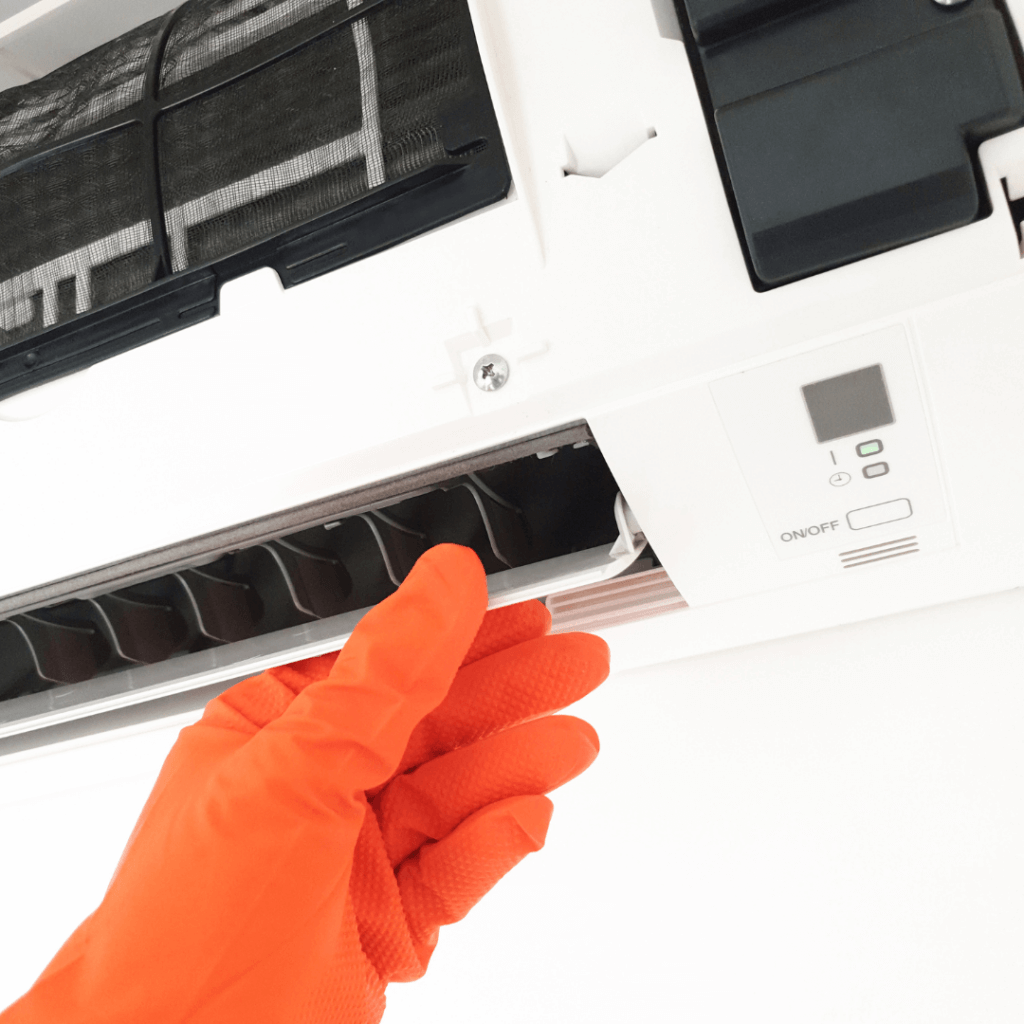How to Clean Mould from Air Conditioner? Mould Removal Tips
Mould Removal Tips: How to Clean Mould from Air Conditioner?
Mould growth in air conditioners can cause serious health dangers to those who live in the affected area. Mould spores in the air we breathe can cause various of health concerns, particularly for individuals who are mould sensitive or allergic. Mould removal is particularly important in air conditioners with regular maintenance to keep a safe and healthy environment. In this article, we will discuss the health hazards and step-by-step guide for mould removal.
Health Issues Caused by Mould
Here are some health issues that may be associated with mould growth in air conditioning systems:
- Mould spores can cause respiratory difficulties such as coughing, wheezing, and shortness of breath. When people with asthma or other respiratory disorders are exposed to mould, their symptoms may increase. Mould removal from a property is vital for sensitive individuals.
- Allergic Reactions: Mould spores can trigger allergic reactions in people who are allergic to mould. Sneezing, nasal congestion, itchy or watery eyes, and skin irritation are all common symptoms. Long-term exposure to mould allergens might result in chronic allergies.
- Irritation of the Throat, nostril, and Eyes: Breathing in airborne mould spores can cause throat, nostril, and eye irritation. A scratchy throat, nasal congestion, runny nose, red or itchy eyes, and general discomfort can follow.
- Headaches and weariness: Exposure to mould has been linked to headaches and weariness. Because of the presence of mould in the air, some people may have difficulties concentrating or remembering things.
If you’re experiencing these symptoms, you may be in need of a mould removal treatment. Air conditioners can often go un-checked for long periods of time with extensive mould removal needed.
Mould’s Negative Impact on Indoor Air Quality and Overall Comfort
Mould growth in air conditioners can have a negative impact on indoor air quality and overall comfort. Mould removal or regular cleaning is recommended to maintain air quality.
Here are some of the ways mould can harm your interior environment:
- Mould growth frequently emits a musty and unpleasant odour. This odour has the potential to penetrate the air, making the indoor atmosphere uncomfortable and unpleasant.
- Mould emits microscopic spores into the air, reducing indoor air quality. When these spores are circulated by the air conditioner, they can contaminate and degrade the quality of the interior air. This can cause a stuffy or stale feeling, as well as the air to feel heavy or moist requiring mould removal.
- Mould flourishes in damp conditions, and its presence in an air conditioner can suggest that there is too much moisture in the system. This might cause higher humidity levels in the indoor space, resulting in an uncomfortable and sticky environment.
- Cooling performance: Mould growth on evaporator coils and other air conditioner components can reduce cooling performance. The mould acts as an insulator, preventing the coils from adequately absorbing heat and lowering the unit’s overall cooling capability.
The Value of Regular Maintenance and Mould Removal
Regular maintenance and early mould removal are critical for ensuring maximum air conditioner operation and a healthy home environment. Here’s why it’s crucial:
- Preserving Indoor Air Quality: By inspecting and cleaning your air conditioner on a regular basis, you may avoid mould growth and mould removal to reduce the spread of mould spores in your home. This contributes to the maintenance of clean and healthy indoor air quality for you and your family.
- Preventing Health Problems: Proactive maintenance and mould removal lower the risk of health problems connected with mould exposure. You may protect yourself and your loved ones from respiratory disorders, allergies, and other health concerns by treating for mould removal as soon as possible.
- Improving Energy Efficiency: A clean and mould-free air conditioner uses less energy. You can assure maximum cooling performance and lower energy use by eliminating mould and maintaining the system, resulting in cost savings on your power costs.
- Extending the Life of Your Air Conditioner: Regular maintenance, including mould removal, will help your air conditioner last longer. You can prevent mould growth by keeping the system clean.
Step-by-Step Guide: How to Clean Mould from Your Air Conditioner
Mould removal from your air conditioner is an important maintenance activity that ensures optimal performance and a healthy interior atmosphere. For successful mould removal from your air conditioner, follow this step-by-step guide:
Mould Removal Preparation
Gather the necessary tools and equipment before beginning the mould removal process. What you’ll need is as follows:
- Disposable gloves, safety goggles or glasses, and a mask or respirator with a HEPA filter are all recommended.
- Mild detergent or specially formulated air conditioner cleaner, a soft brush or toothbrush, a vacuum cleaner with a brush attachment, and a bucket of clean water are all necessary cleaning supplies.
- For wiping down surfaces, use a microfiber cloth or a cleaning cloth.
Air Conditioner Cover and Filters Removal
Before beginning the mould removal process, make sure that the electricity to the air conditioner is switched off. This is accomplished by turning off the circuit breaker or unplugging the unit from the power supply.
- Remove the air conditioner cover: Depending on the model, unscrew the cover or release the clips that hold it in place. Set the cover aside.
- Remove the filters: Find the air filters, which are usually hidden below the cover. Remove them with care, following the manufacturer’s directions. Examine the filters for mould, dirt, or debris.
Air Conditioner Component Cleaning
Next, begin the cleaning process of mould removal by following these steps:
- Vacuum the filters: Gently remove loose mould, dust, and debris from the filters with a vacuum cleaner equipped with a brush attachment. Pay close attention to any spots where mould can be seen. Consider replacing the filters if they are highly polluted.
- Make a cleaning solution by following these steps: Mix a mild detergent or a specifically prepared air conditioner cleaner in a bucket of clean water according to the product description. Check that the cleaning solution is appropriate for the components you are cleaning.
- Clean the air conditioner cover: Soak the air conditioner cover in the cleaning solution for a few minutes. Scrub away mould, dirt, and grime with a soft brush or toothbrush. Keep an eye out for crevices, corners, and apparent mould growth. Allow the cover to dry completely after rinsing it with clean water for effective mould removal.
- Locate the evaporator coils, which are normally located behind the air filter, and clean them. Brush away any obvious mould development with a soft brush or toothbrush. To avoid harming the coils, proceed with caution. If the mould is particularly difficult to reach, a commercial air conditioner cleaner may be required. Apply and rinse according to the manufacturer’s directions.
- Remove the condensate drain pan, which is normally found under the evaporator coils, and clean it. Use the cleaning solution and a cloth or brush to thoroughly clean it. Check for any obstructions in the drain hole.
- Clean the fan blades: Locate and clean the fan blades with the cleaning solution and a cloth or brush. Take care to clean both sides of the blades and remove any mildew or debris for effective mould removal.
Decontamination and Prevention of Future Mould Growth
Finally, it is important to disinfect the air conditioning unit for a complete mould removal treatment and future prevention.
- Disinfect the air conditioner components: After cleaning, disinfect them to remove any lingering mould spores. Use an air conditioner cleaning disinfectant and follow the manufacturer’s recommendations. Disinfect the coils, drain pan, and any other accessible surfaces.
- Maintain proper humidity levels: Use a dehumidifier or keep the room’s humidity level below 50%. Mould flourishes in moist conditions.
- Keep track of when your air conditioner was last cleaned and underwent a mould removal treatment. Make sure to regularly clean your air conditioning units, at least annually.
When to Hire a Professional Mould Removal Treatment:
You should consider hiring a professional mould removal treatment for your air conditioner under the following circumstances:
- Visible mould growth: If you can see mould growth on or around your air conditioner, it is advisable to seek professional help. Mould can spread quickly and may indicate a larger problem.
- Persistent musty odour: If your air conditioner emits a persistent musty smell, even after regular cleaning and maintenance, it could be a sign of mould growth within the unit or the air ducts.
- Water damage or leaks: If your air conditioner has been exposed to water damage or you’ve noticed leaks around the unit, it increases the likelihood of mould growth. Moisture provides an ideal environment for mould to thrive.
- DIY efforts haven’t resolved the issue: If you have attempted to clean the air conditioner yourself but the mould problem persists, it is recommended to hire a professional. They have the expertise and specialized equipment to thoroughly assess and treat mould issues.
It is important to address mould removal promptly, as exposure to mould can pose health risks and worsen existing respiratory conditions. Hiring a professional mould removal treatment can help ensure the thorough cleaning and remediation of your air conditioner, improving indoor air quality and preventing further mould growth.
Why Choose AllAces?
AllAces Cleaning & Restoration has over 34 years of experience within the industry, specialising in mould removal and full-scale mould remediations. AllAces trained and certified technicians work effectively and efficiently to deliver the best possible results and return your property to its pre-loss condition. Our advanced technologies and equipment provide unmatched results with each client’s individual needs considered. Contact the experts today at 1800 00 10 10!
To learn more about mould removal solutions:
FAQs
Why does mould grow in an air conditioner?
Mould can grow in an air conditioner due to the presence of moisture, high humidity levels, and organic matter such as dust or debris, which provide favourable conditions for mould spores to thrive and reproduce.
Why is mould dangerous?
Mould can be dangerous because it releases spores into the air, which, when inhaled, can cause allergic reactions, respiratory issues, and potential health problems, especially for individuals with allergies, asthma, or weakened immune systems.
How often should an air conditioner be cleaned?
The frequency of air conditioner cleaning can vary depending on several factors, including the type of unit, usage patterns, and the environment. However, a general guideline is to clean and maintain your air conditioner at least once a year.



